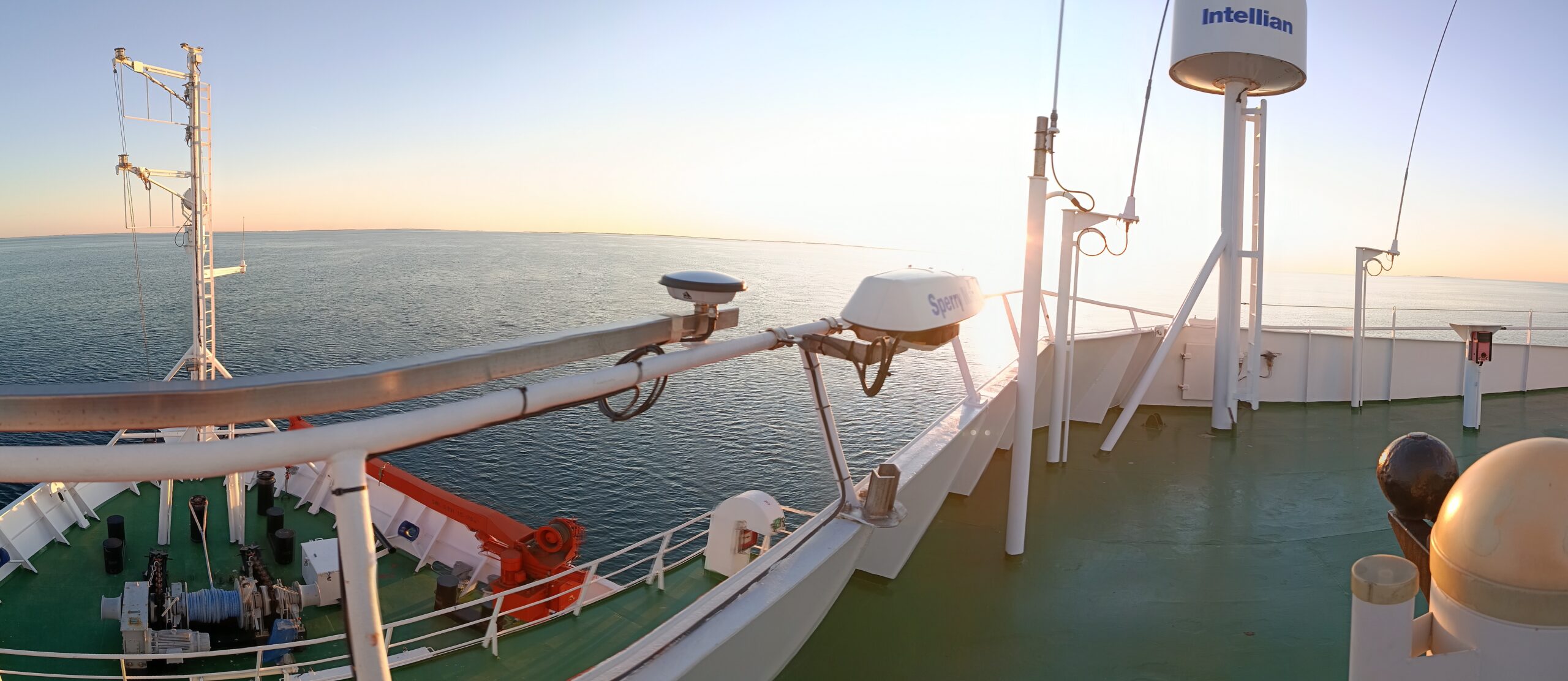
Photo by Rodrigo Silva. Feature image (Porthole sunset) by Jan Dierking
It was Baltic!
Notes from a research cruise training opportunity with GEOMAR
By Diane Esson, with contributions from Rodrigo Silva and Jan Dierking, June 2025
For ten days in April, MARE-Madeira researcher Rodrigo Silva wrapped up in every woolen layer he owns (plus some borrowed ones) and participated in the AL630 research cruise in the Baltic Sea. Organized by GEOMAR, the cruise was part of the “Baltic Sea Integrative Long-Term Data Series,” which has been going since 1987(!) and monitors how climate change and anthropogenic pressures impact the planktonic communities, fish populations, and food webs in the deeper Baltic basins.
Rodrigo’s Baltic Cruise experience was part of our TWILIGHTED deep-sea research capacity-building program, which provides opportunities for MARE-Madeira researchers to learn techniques, tools and advanced technologies commonly used in deep-sea research. Although this cruise was conducted in shallower waters (down to ~90m), many of the methods are highly relevant for deep-sea research, making it a valuable training expedition.

Photos by Rodrigo Silva (Cruise-wear) and Jan Dierking (Training and Baltic Sea at sunset)
Over the ten days, Rodrigo gained experience using different types of nets; processing, storing and doing inventory of a variety of samples; and supporting hydrological and fish surveys. “I had the opportunity to go through practically all the research tasks that took place — plankton sampling, water sampling, fishing, observation of the hydrographic data collected using a CTD and sample pre-treatment, processing and storage. But the core of my work was plankton sampling,” Rodrigo explained. “This was organized into 24-hour samplings with a total of three teams working in four-hour shifts, twice a day. In my case, I was on shift from 08h00 – 12h00 and from 20h00-24h00.”
Together, the cruise’s scientific team performed a regular sampling effort of zooplankton communities, including ichtyoplankton (fish larvae), gelatinous zooplankton and phytoplankton. To do this, they used Bongo nets (towed horizontally, lowered from the surface to near the sea floor and slowly back up, thus covering all water layers), Apstein, WP2 and WP3 nets (to capture a vertical sample from bottom to surface), and Multinets (which launch multiple nets connected to an apparatus, such that each net collects samples at a different depth, allowing for vertically-resolved sampling). In addition to these plankton surveys, the team conducted water sampling, hydrological surveys (recording pressure, conductivity, temperature and dissolved oxygen) and fish surveys (using a small bottom trawl) to survey Baltic cod (Gadus morhua) and flatfish populations.

Photos by Jan Dierking (Bongo nets) and Rodrigo Silva (Fish survey and AL630)
New discoveries
“Perhaps the most striking thing to come out of this expedition was the very low abundance of cod larvae (in a period of the year when they should be abundant). The sampling suggests that the Baltic cod populations are not healthy. Despite bans on commercial fishing, it is not enough to recover the stocks of this species.”
Rodrigo returned to Madeira with many stories to tell and a lot of enthusiasm. As a scientific diver on the MARE-Madeira team, he was particularly struck by some of the fish species he saw on the cruise. “For me, everything was fascinating. Apart from plaice and sole, most of the species found were completely different to those we have in Madeira, which is not surprising given the great variations in salinity in the Baltic Sea. But if I had to choose the most fascinating parts, it would be seeing fresh cod for the first time in my life and seeing the water column stratification.”
In the Baltic Sea, there are areas with big differences in salinity along the water column. In the central areas, for example, low salinity water (around only 8 practical salinity units — psu) is found at the surface while more saline water (up to 18 psu*) sits near the bottom. This is because the higher the salinity, the denser — and thus deeper — the water. This higher salinity is important for the cod eggs, which can be found floating in this denser layer (without it, they would sink all the way to the bottom and die). However, the denser, deeper layers in the Baltic Sea are also now facing anoxia. Anoxia, the lack of oxygen, is linked to high nutrient levels caused by humans, and is a real concern for the cod population as their eggs and larvae can’t survive without oxygen.
*Note that even high salinity zones in the Baltic are really low compared to oceanic salinities at ~36 psu in Madeira!

Photos by Jan Dierking
Bringing it home
Which of the technologies and methods used on the AL630 could we apply in Madeira? Rodrigo points to the potential to use nets that can be handled from a rib to regularly evaluate the diversity of fish larvae and gelatinous zooplankton in Madeira’s waters. “Although the use of the Multinet would be very interesting due to its capacity to sample different depths for each deployment, it is a very complex and heavy apparatus, so it wouldn’t be an easy task to operate from a rib.” He was also (overly?) excited about the potential for GEOMAR’s digital labelling system to improve MARE-Madeira’s sample labelling and records. “They don’t have to do it by hand!” he announced in the post-cruise TWILIGHTED meeting in Madeira, sparking joy among the hand-cramped researchers, and mirth from everyone else. Apparently the wheels are already turning to make this a reality!

Photos by Jan Dierking
With no hesitation, Rodrigo said this cruise was an excellent opportunity — not only for his personal development, but also for strengthening relationships between our institutes for future work. Speaking of the experience, he said, “I would like to express my sincere gratitude to Dr. João Canning-Clode for the chance to participate in this cruise, to Dr. Jan Dierking for all the support, welcome, and good vibes during the entire process, and to all my cruise colleagues. It was a pleasure to share these 10 days with you on-board! Hope to see you soon! Who knows, maybe in Madeira…”
Learn more about the AL630 cruise on the official GEOMAR blog!
